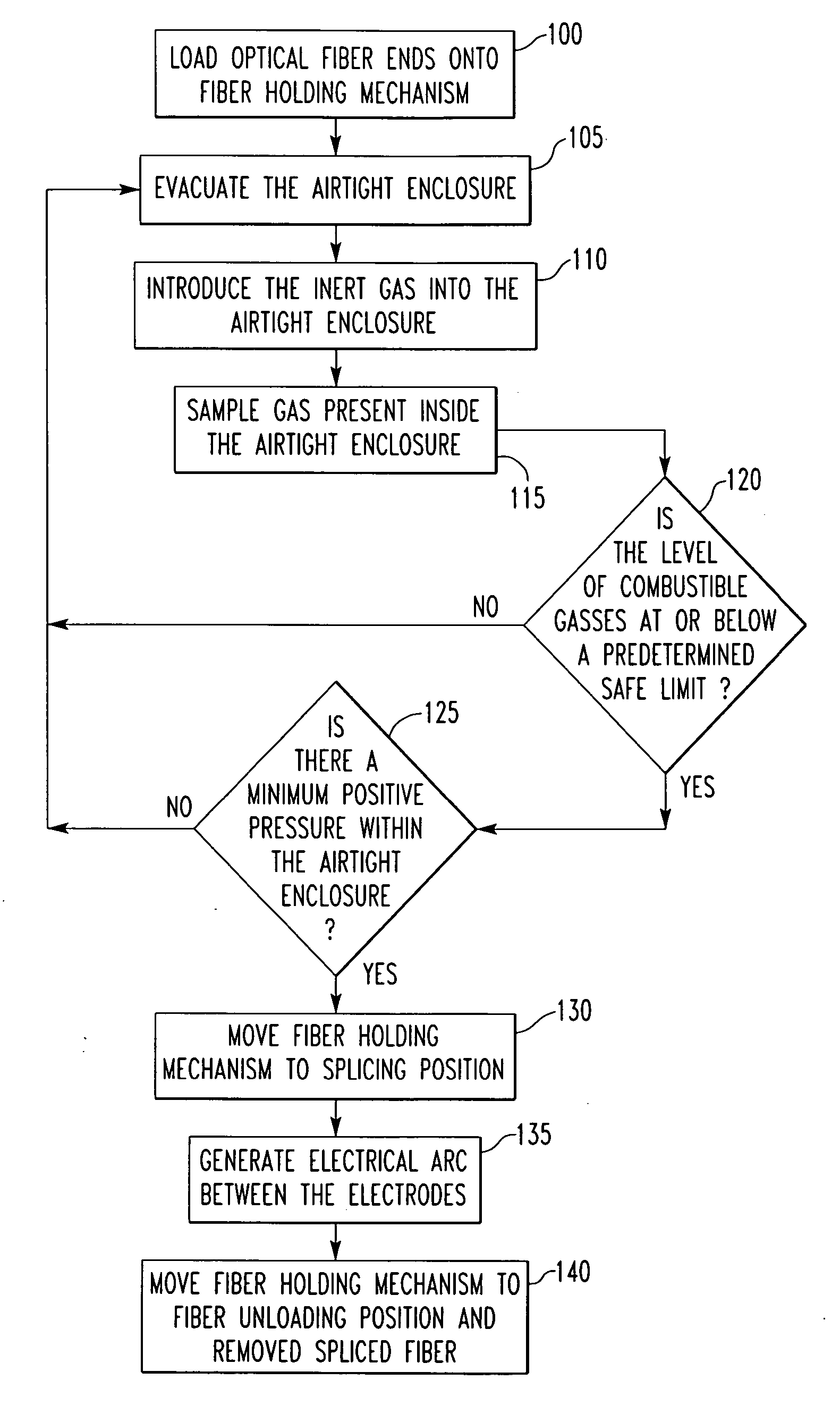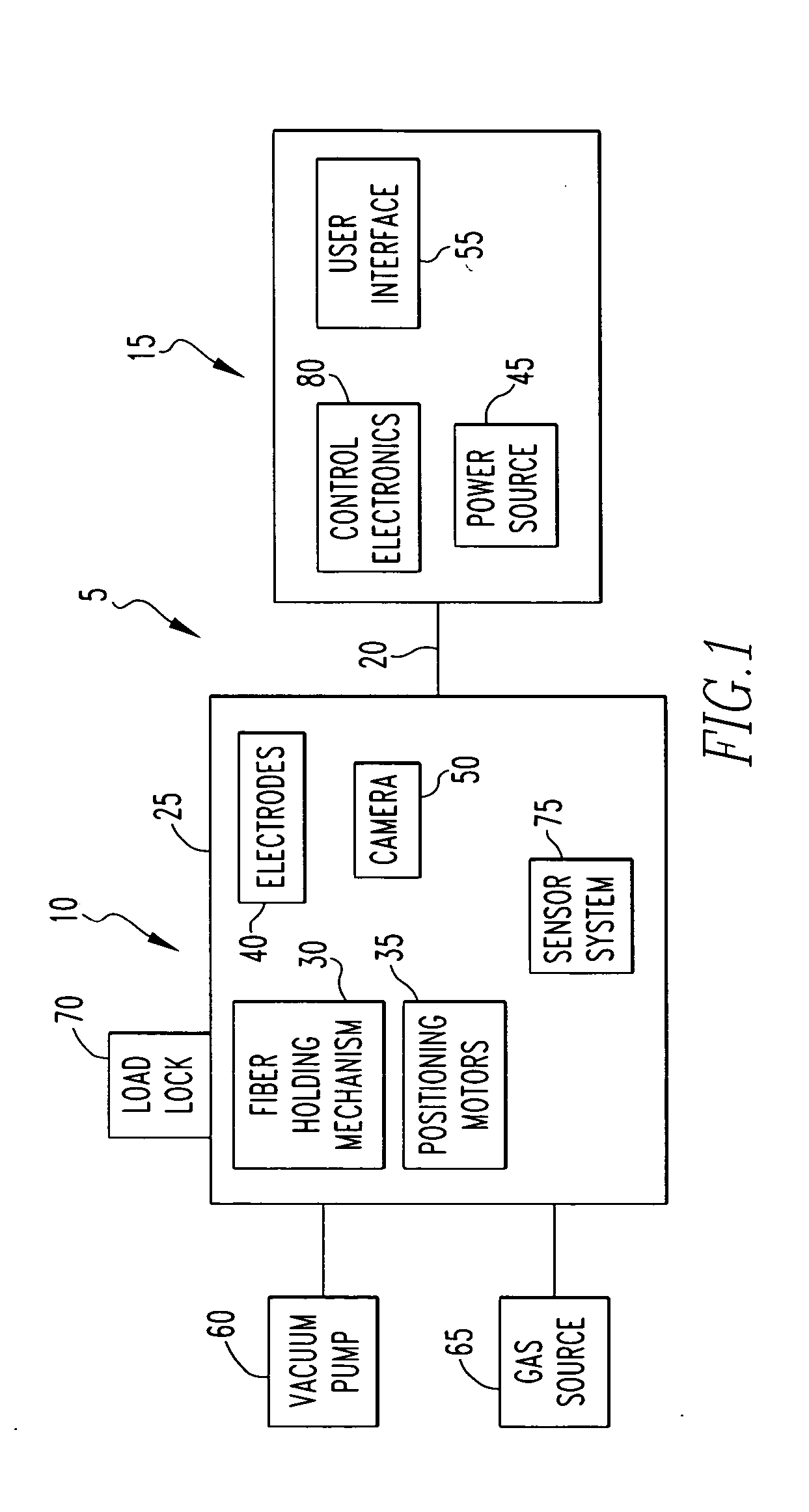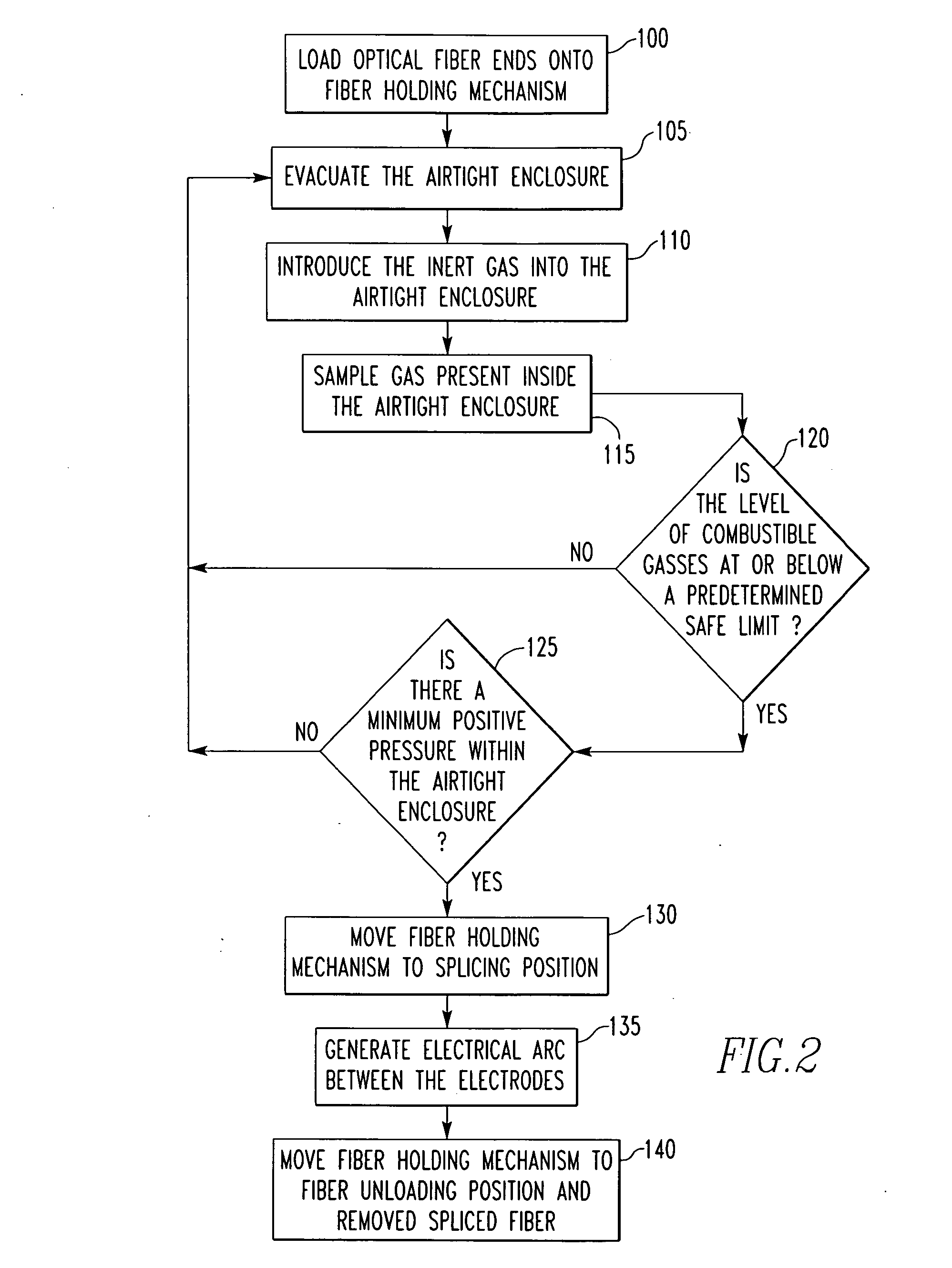Method and apparatus for fusion splicing optical fibers
a technology of optical fibers and fusion splicing, applied in the field of preparation of optical fibers, can solve the problems unreliable splicing, and inability to meet the needs of optical fiber splicing,
- Summary
- Abstract
- Description
- Claims
- Application Information
AI Technical Summary
Benefits of technology
Problems solved by technology
Method used
Image
Examples
Embodiment Construction
[0020]FIG. 1 is a block diagram of a fusion splicing apparatus 5 according to one embodiment of the present invention. As seen in FIG. 1, the fusion splicing apparatus 5 includes a splice head 10 and support hardware 15 that are connected to one another by cable assembly 20. Fusion splicing apparatus 5 is particularly well adapted for use in space constrained and / or hazardous environments because, as described in detail below, the splice head 10 (which includes the components for generating the electrical splicing arc) is physically separated from the support hardware 15, and the splice head 10 is isolated from the surrounding environment.
[0021] Splice head 10 includes an airtight enclosure 25 made of a material such as, without limitation, metal or plastic. Airtight enclosure 25 may take on any of a number of shapes, such as, without limitation, a rectangular, square or spherical shape. Splice head 10 is provided with a fiber holding mechanism 30 for holding the ends of the optica...
PUM
 Login to View More
Login to View More Abstract
Description
Claims
Application Information
 Login to View More
Login to View More - R&D
- Intellectual Property
- Life Sciences
- Materials
- Tech Scout
- Unparalleled Data Quality
- Higher Quality Content
- 60% Fewer Hallucinations
Browse by: Latest US Patents, China's latest patents, Technical Efficacy Thesaurus, Application Domain, Technology Topic, Popular Technical Reports.
© 2025 PatSnap. All rights reserved.Legal|Privacy policy|Modern Slavery Act Transparency Statement|Sitemap|About US| Contact US: help@patsnap.com



